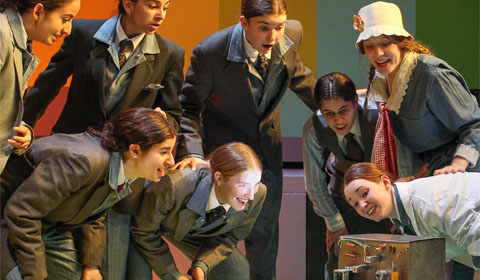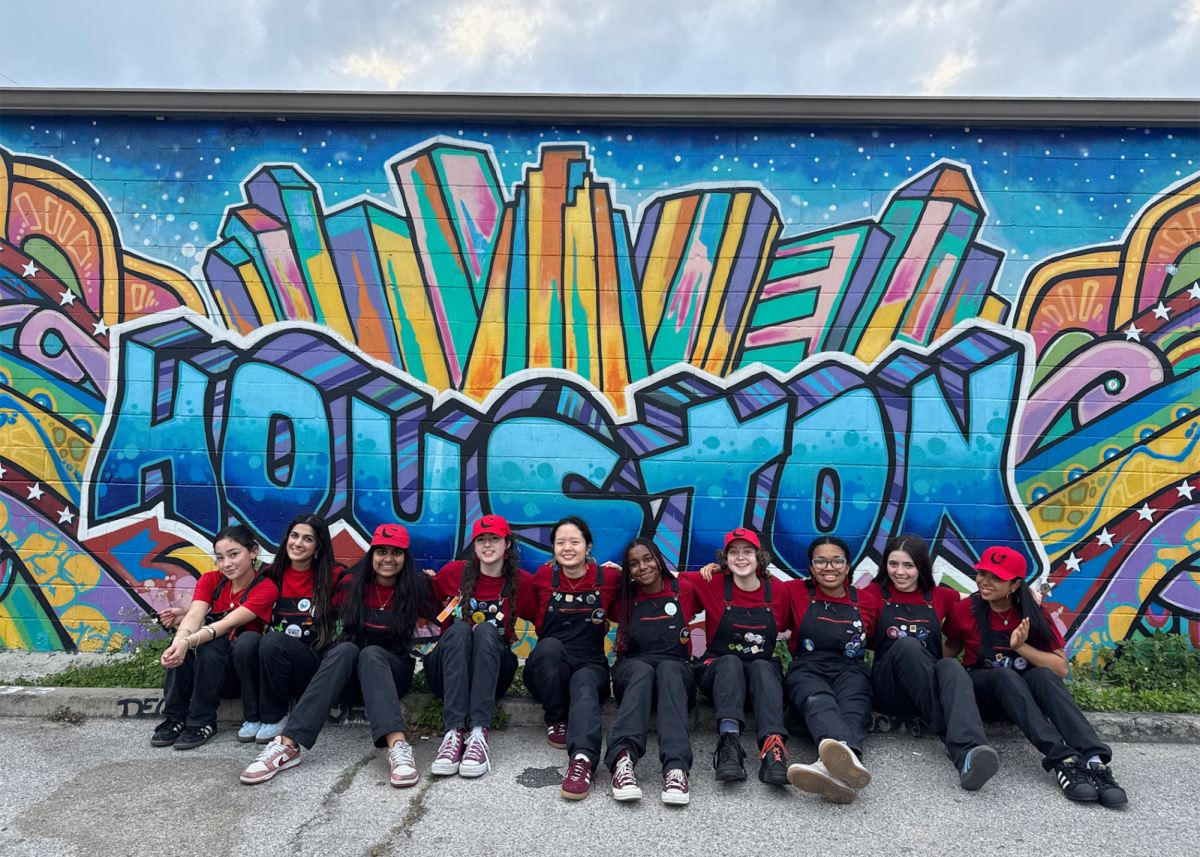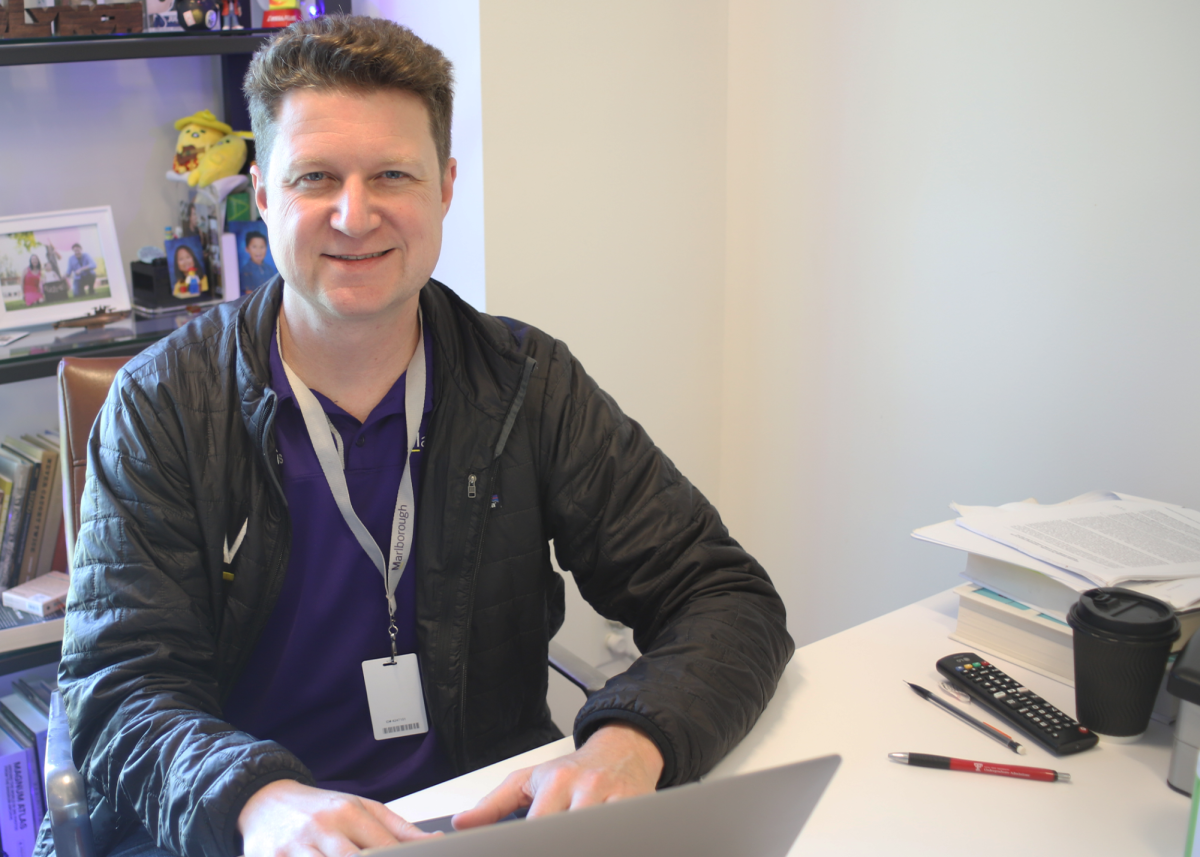


Retro ’20s music hangs in the air as, one by one, a company of girls hustles across the technicolor floor of the Stark Family Intimate Theatre and then whips to a standstill. Alongside the “techies,” or the girls who work with props, lighting and sound behind the scenes, these actors have painted the Theatre to resemble the color bars of a TV screen. The girls begin to hum, and as the sound grows into a roaring crescendo, Catherine Green ’13, clad in a suit, takes the stage, static crackling in the distance. In her expressive voice, she weaves a tale of innovation, love, betrayal and television.
On Mar. 8, 9, 14, 15 and 16, Drama Ensemble performed The Farnsworth Invention, a play set in the ’20s and ’30s that greatly fictionalizes the story of young Philo T. Farnsworth’s creation of television and the ensuing legal battle with president of the Radio Corporation of America, David Sarnoff.
The playwright, Academy Award-winner Aaron Sorkin, is best known for writing television shows such as The Newsroom and The West Wing and films such as A Few Good Men and The Social Network, among others. Originally devised as a screenplay, the play opened on Broadway in 2007 and ran for five months.
Performing Arts Department Head Anne Scarbrough said she sifted through dozens of works before settling on Farnsworth.
“I always think the Drama Ensemble play chooses us,” she mused. She also said she found that this particular piece resonated with her “because it brought up what the medium [of television] is used for versus what it could have been used for.”
As the play suggests, the originators of the form intended for television to stretch the minds of the public, to shed light on the horrors of war, to end illiteracy—not to pull people away from reality into a swill of so-called reality shows.
The Ensemble took a more abstract approach than the script initially designated, forging a sparse and flexible set built entirely of painted wooden boxes to convey 42 locations. Scarbrough gave the girls ample reign to develop the choreography in what ultimately became quite a motion-oriented theatrical piece coupled with Sorkin’s notoriously verbose dialogue.
“[The girls] have certain ingredients they have to follow,” she said, “[but] they created most of the movements.”
Drama Ensemble member Cassidy ’13 said she enjoyed the challenge of performing in such a rapid-fire play.
“You’re constantly on your feet!” she said.
Furthermore, the 15 girls were saddled with the task of portraying over 80 characters, the majority of whom are actual historical figures. The girls all wore blue jumpsuits, adding articles of clothing such as a jaunty hat and an overcoat to differentiate between parts. After auditions in December, Scarbrough assigned each actor an “anchor character,” the main role she would carry in the show, but throughout the rehearsal process each girl took on several other personas.
“As we kept going, we kept fitting ourselves to these roles,” Cassidy said. “We had to fully commit to each character and give each a backstory.”
Susie ’13, who played Farnsworth, stressed the passion and work ethic of the Ensemble.
“We’re not going to justify ourselves only as a high school group,” she said. “I think that the work we do is as valuable as a show you’d see anywhere else.”
History and social sciences instructor Mike Rindge had great enthusiasm for the show and said he agreed with Riley that the actors’ performances were on a professional level.
“I thought it was a creative rendition, [and] as a history teacher I loved the historical aspects,” he said. “I thought the themes were very prescient.”











